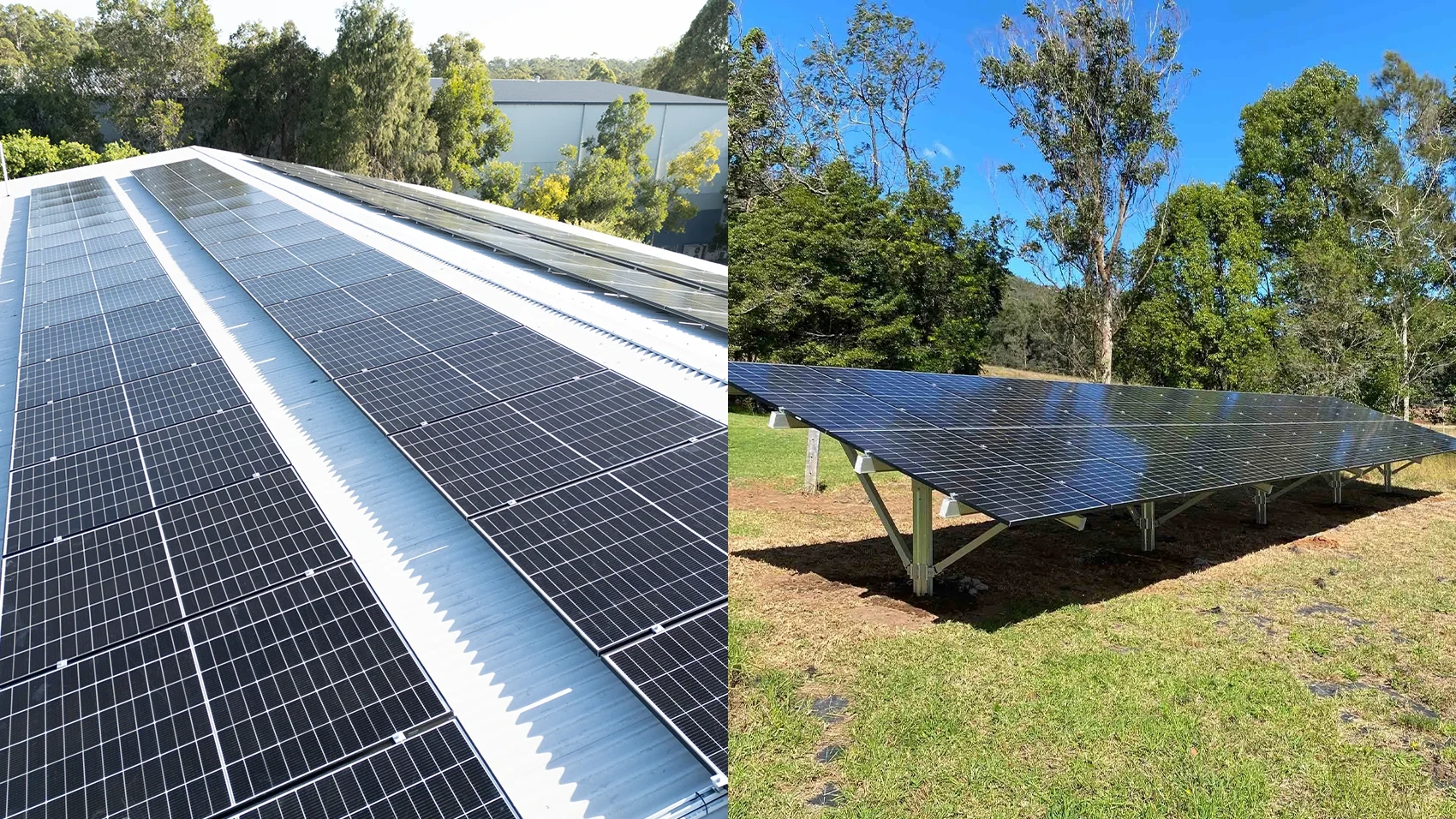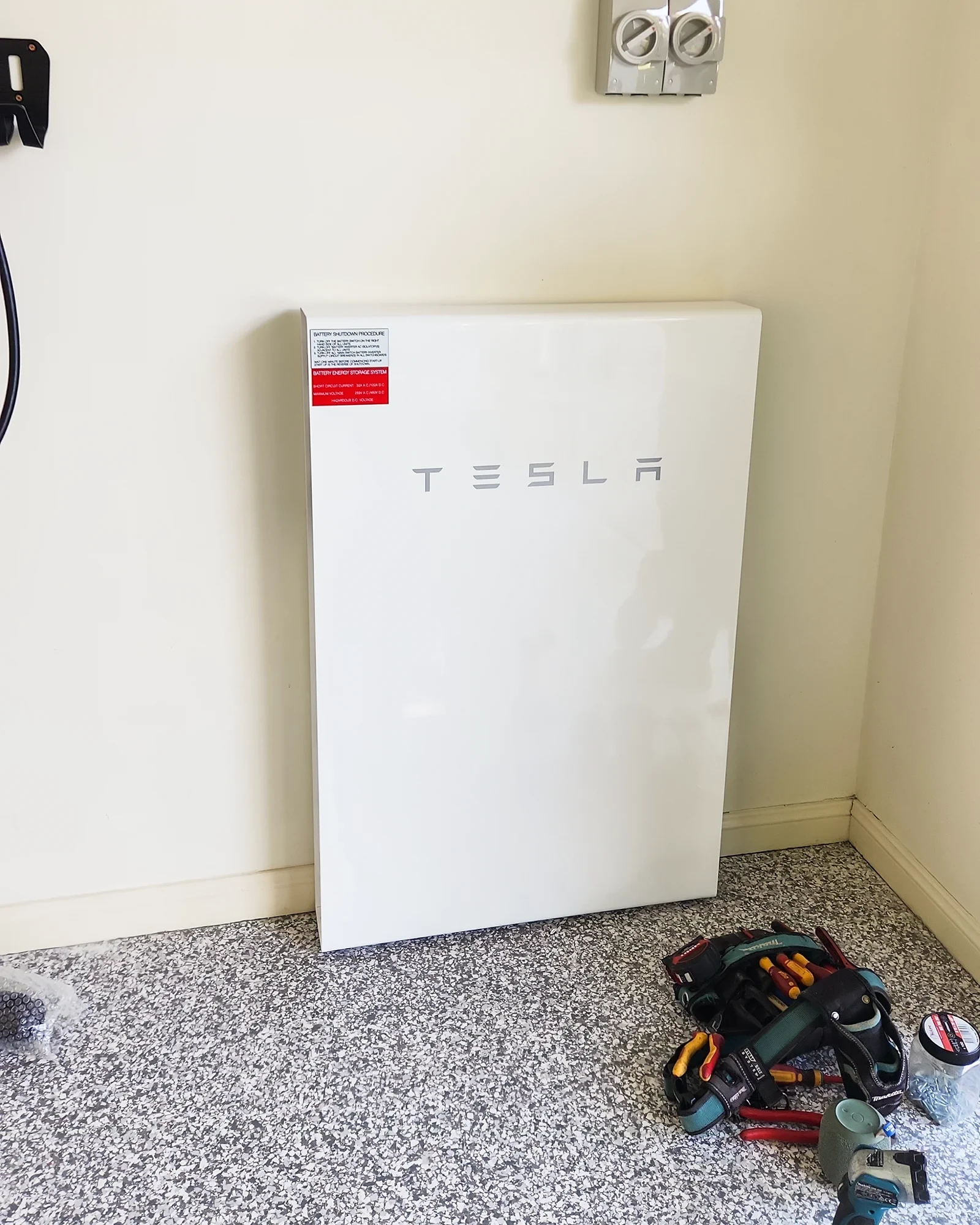The NSW Battery PRDS Incentive is Now Available
The NSW Battery PRDS Incentive is Now Available
Posted 14 Dec
With the uptake of solar batteries for homes and businesses, we thought it might be a good idea to have a quick look at batteries and how
they actually work to give you a better idea of how they work.
Before we dive into electricity let’s have a think about how energy, mechanical energy because it’s easy to visualise, works.
Take a rainwater tank at home connected via a hose to a garden sprinkler; the type that rotates to evenly water the lawn. If the rainwater
tank is full the sprinkler spins quite rapidly; less so as the tank empties. What is happening?
The answer is that the potential energy due to the height of the water in the tank is converted into work done, and kinetic energy
expended by the rotating water turbine. We say potential or static energy because while the tank is at rest and no water is flowing the
water has the potential to do work and expend energy
whilst it’s not actually doing any work.
When full the tank has, by virtue of the height if the water, greater potential to do work than when the level falls. The tank stores more potential energy when its full; less when empty.


Kinetic energy is the work done and energy expended by motion. It suggests energy of a dynamic nature. Incidentally what we have demonstrated in the water tank and sprinkler example is the exact model of a hydroelectric system. Back to electrical energy storage methods.
The first obvious one is a battery whereby chemical reactions, electrical energy is stored in the chemistry of the battery. Like with the water tank the energy is stored as potential energy or here as chemical potential energy; waiting in the battery to do work by forcing a flow of electrons through an outside element such as a light bulb for that potential energy to be converted electrical energy and then to light energy and heat energy in the light bulb.
Note that the light bulb doesn’t store energy, it dissipates energy and converts energy from one form to another; light and heat.
The next electrical storage element we will look at, consists of two metallic plates placed close to each other but not touching. Its called a capacitor.
If we connect its two leads to our battery, electrons will flow briefly until they encounter the air gap when they will stop but accumulate on the plate waiting for an opportunity to cross to the other plate and find their way back to the opposite pole of the battery.
We say that the brief flow of electrons represents a small amount of kinetic energy expended to be stored as potential energy in the capacitor. The fact that the capacitor has stored some energy can be demonstrated by removing the connection to the battery and placing our light bulb across the leads instead. The bulb will flash briefly as it dissipates this potential or electrostatic energy. Electrostatic infers that the energy is stored in the static field across the metallic plates.


Rubbing a plastic ruler across some synthetic cloth and placing it near our skin demonstrates the effect of static charge. We have loaded up the ruler with electrons, or removed an equal number of electrons and the resultant electric field attracts the mobile hairs which have no charge on our arm causing them to stand up in attraction to an oppositely charged ruler. The ruler is one plate of the capacitor our arm the other.
A capacitor is a fundamental electrical energy storage component. The air in our example has the general name dielectric and factors such as the plate area, distance between the plates and dielectric material dictate the energy storage capability of the capacitor. The energy is stored as potential energy in the electric field between the capacitor plates. Discharging the capacitor by placing a conductor between the plates results in current lowing and the potential energy being converted to kinetic energy by way of heat. Let’s move to the other storage element in electricity, the inductor.
The word battery suggests an array or collection of things operating in concert. For example, we speak of a battery of cannons. In an electrical battery we are referring to more than one electrochemical cell connected, usually in series. The individual cell voltages accumulate to give us the total battery voltage. In the domestic renewables world battery nominal voltages range from 48 volts to over 500 volts.
In a lithium-ion cell the nominal or average voltage varies with the chemistry employed. 3.2 volts for lithium ferro phosphate and 3.7 volts for those cells containing nickel, manganese, cobalt. As the cell charges and discharges these voltages rise and fall. There are upper limits over which the cell’s life can be compromised and overheating may occur and lower voltages where permanent damage will occur.
In the battery manufacturing process, cells are chosen to have closely matched characteristics before being joined to form a battery. However, no matter how closely they are matched, during the charging phase individual cell voltages inevitably drift apart and this causes problems. Unchecked, some cells may rise to the dangerous overvoltage region and with some chemistries, catastrophic failure accompanied by fire.

Enter the electronic module attached to the battery called the Battery Management System (BMS). This device monitors each cell voltage, and in some systems each cell temperature and should a cell start to deviate from the norm by more than several thousandths of a volt the BMS switches a resistor across that cell to bleed energy from that cell until it equals the correct value. Because of the criticality of managing cell overvoltage the reliability of the BMS is extremely important.
Self managed and managed batteries. A battery which manages itself without any outside intervention is called a self managed battery. Those
which have internal management supplemented by oversight from the connected inverter are called managed batteries. Today’s high voltage
batteries, those with nominal battery voltages above 48 volts, are exclusively managed batteries. Some, low voltage batteries are managed
batteries.
Images courtesy of Energy Renaissance and Pexels.

Rooftop and ground mounted solar are ways you can add solar to your home.. but which is better? Compare roof vs. ground solar systems and see what's best.

Explore the NSW battery 'rebate' (Peak Demand Reduction Scheme), approved battery brands, pricing, and how you can be eligible to save on your first battery.
Leave a Comment